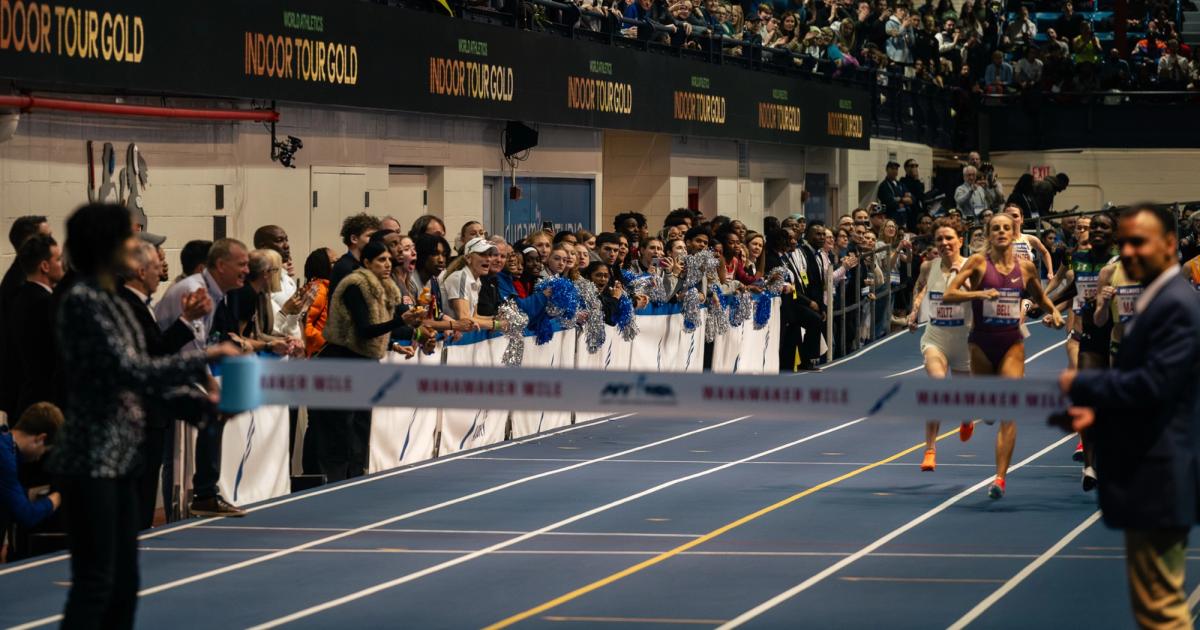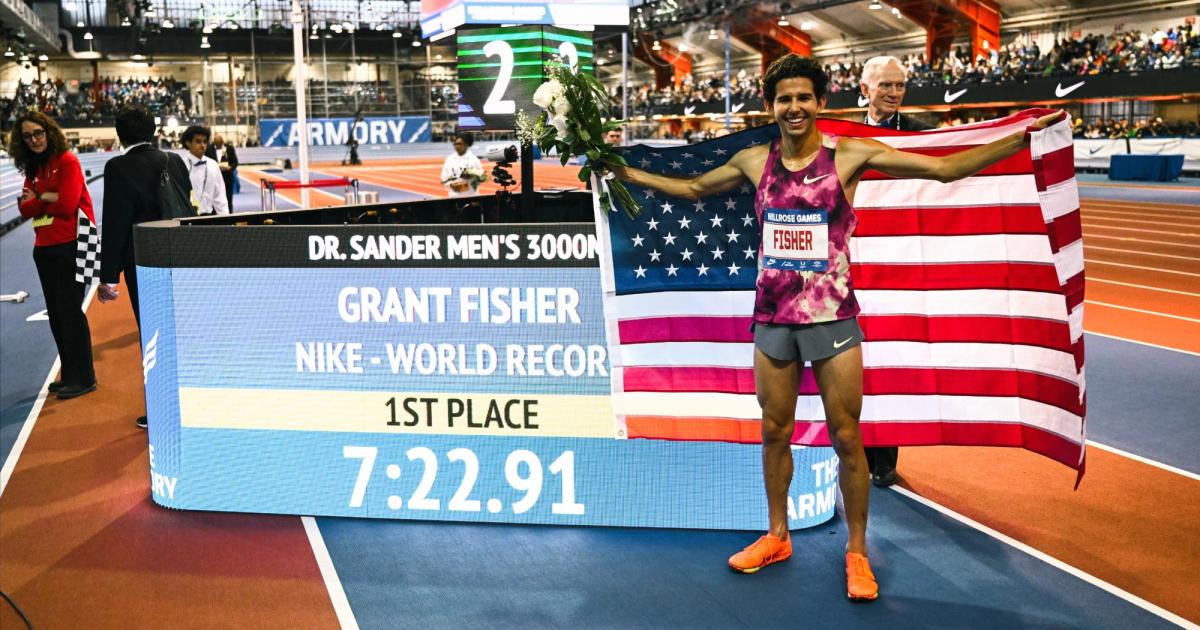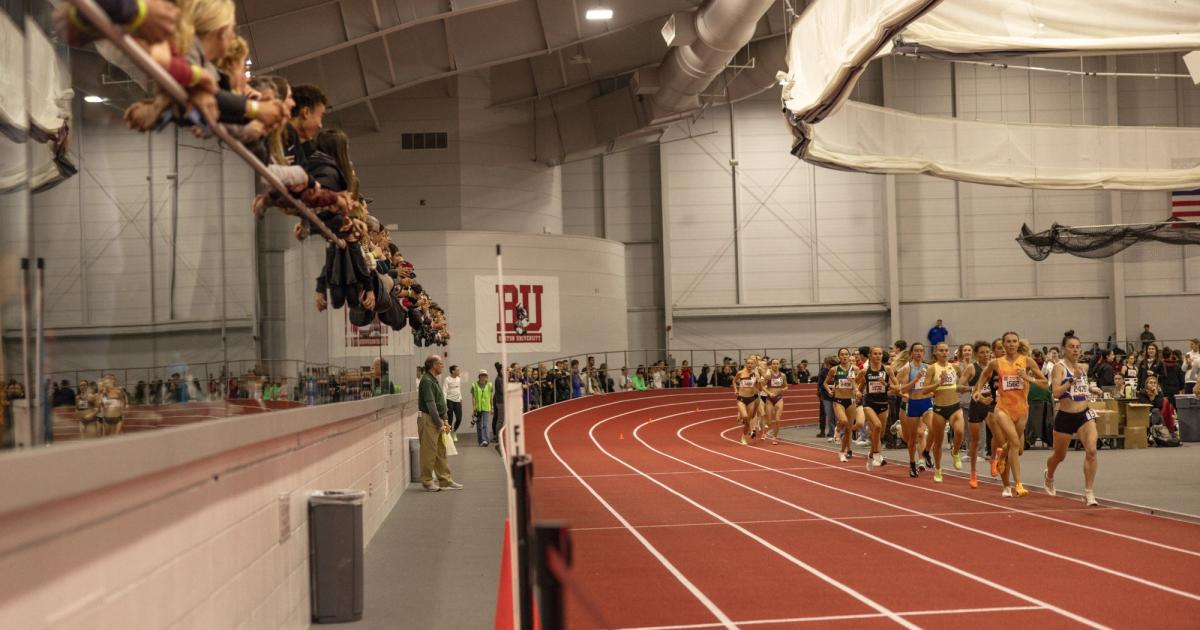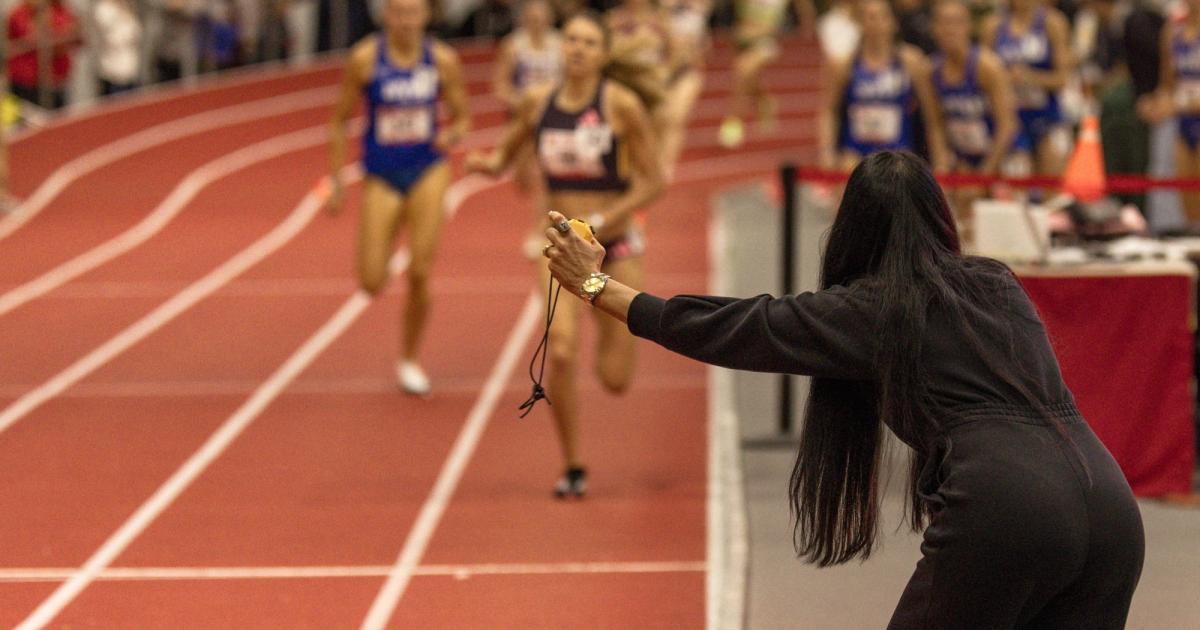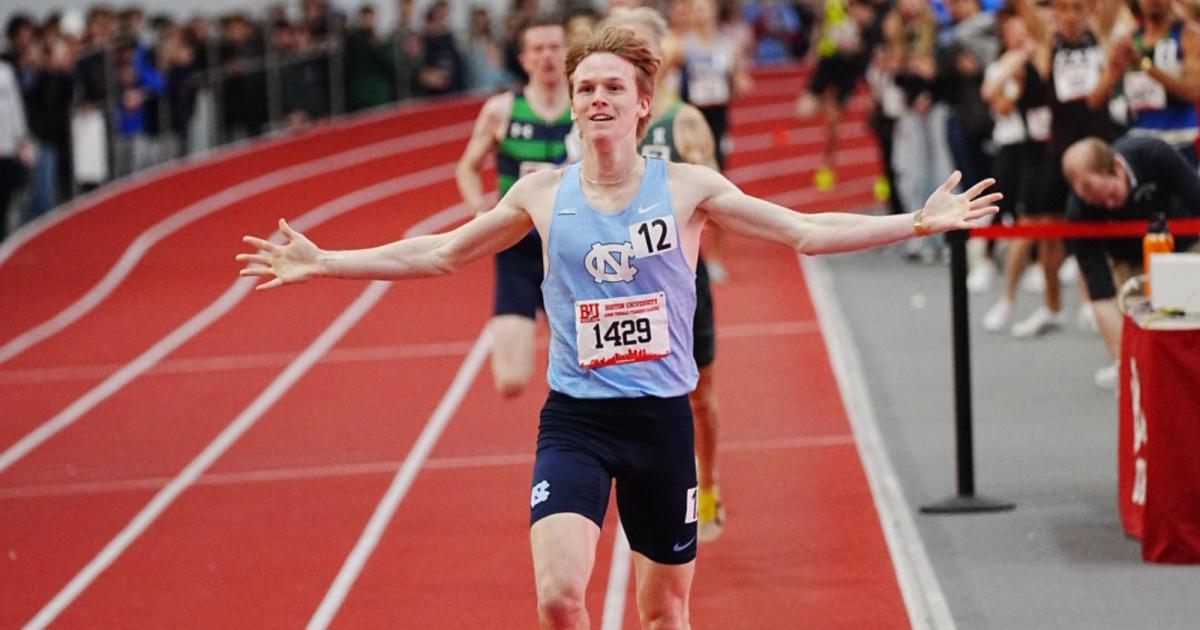By Chris Chavez
February 12, 2025
Blue tracks are just faster. At least, that’s what you'd be forced to conclude after watching Millrose on Saturday, where records fell so frequently it felt like the track was actively conspiring against the laws of physics. Race after race, result after result, it felt like every single athlete to set foot inside the historic Washington Heights building ended up with a “PB,” “NR,” or “WL” next to their name.
The revamped and recolored Armory track, freshly installed by Miller Sports Construction, officially opened for business in October after a meticulous resurfacing project that started in August. They stripped off five layers of the old Mondo surface, kept some of the plywood, and laid down one pristine layer of brand-new Mondo Super X720 atop the original layer of Mondo.
The Armory had run some tests and found that it was possible the old track had so much Mondo piled on top that it wasn’t providing optimal bounce—sort of like a mattress from a college dorm room, which probably had 15+ previous “owners.” (Granted: Josh Kerr’s two-mile world record at last year’s Millrose Games showed that the track had at least some pop.)
But bounce science only scratches the surface (pun intended) of the new track’s mystique. Longtime New York run club locals occasionally offer an additional theory—one based on the Armory’s location in the world. Like the “Coors Field Effect” in baseball, where the Rockies’ high-altitude stadium is generally thought to make balls travel a little farther, the building itself could potentially be adding to the third-floor track’s boost. Could the Armory really be getting literal structural support, as it sits on the third floor of a steel-girder building? Until biomechanics guru-slash-ultramarathoner Geoffrey Burns, who previously wrote about the physics of Boston University’s track, teams up with an architect to answer that in a more scientific and data-driven way, we may never know for sure.
There are other factors at play as well. The Armory track, like BU’s, is permanently fixed, while newer venues lean into hydraulic tracks that can rise and fall like a seesaw. Do the hydraulics absorb energy in ways that make them slightly slower? Newly-installed humidifiers are also helping athletes combat track hack. The Armory’s tighter turn radius is generally considered slower for distance than the more forgiving ovals at BU or Penn’s new Ott Center—but the pace at which the milers of 2025 run is also faster. We also know that human bodies have all kinds of person-to-person variance: certain athletes are “super-responders” to carbon-shoe technology or high altitude training. Could certain athletes’ biomechanics interact with different track surfaces the way some hitters just see the ball better in certain ballparks?
Until some physics-obsessed researcher shows up at the Armory with accelerometers and a whiteboard, maybe the simplest answer is correct: the track is blue now, and records are dropping. Coincidence? Maybe. But we’ll never know for sure.

Chris Chavez
Chris Chavez launched CITIUS MAG in 2016 as a passion project while working full-time for Sports Illustrated. He covered the 2016 Olympics in Rio de Janeiro and grew his humble blog into a multi-pronged media company. He completed all six World Marathon Majors and on Feb. 15th, 2025 finally broke five minutes for the mile.
